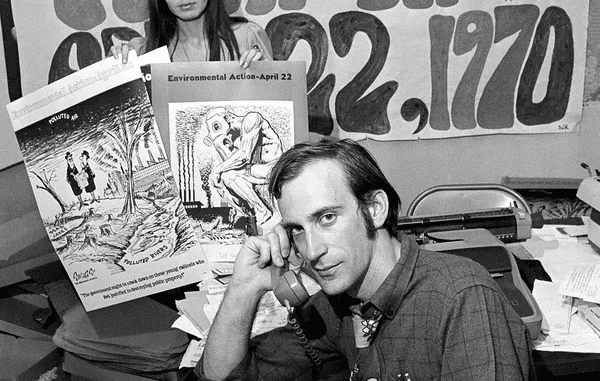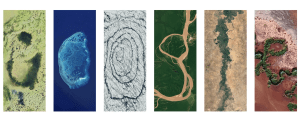
Do you want to travel the world? With the help of Google, you can in two seconds.
Every year on Earth Day, Google showcases the world’s six continents’ breathtaking scenery in its doodle. With each Google letter, the massive search engine company used satellite technology to create a collage that illustrates the efforts being made in each continent to promote global sustainability. Giving the viewer a tour of the world’s beneficial environmental changes is the aim of this doodle.
Check out the Earth Day Google Doodle here:

Earth Day Letters Regions that are exhibiting positive environmental efforts are represented with Google Doodles.
G
Where: Islands of Turks and Caicos
Numerous regions of biodiversity can be found in Turks and Caicos. The island has worked to restore endangered species like the rock iguana and safeguard natural resources like reefs in an effort to maintain the nation’s conservation efforts.
O
Location: Mexico’s Scorpion Reef National Park.
Arriving in Arrecife de Alacranes, Google flies to the Gulf of Mexico. This UNESCO biosphere reserve and the greatest reef in the southern Gulf of Mexico are both located here. Numerous coral types as well as a number of threatened bird and turtle species can be found in this maritime protected area.
O
Location: Icelan, Vatnajokukull National Parkd
You’ll enjoy Google’s stopover in Iceland if you don’t mind the cold. Despite being well-known for its polar bear population, the nation has more natural beauty to offer. In an effort to preserve the ecology within and surrounding the greatest glacier in Europe, the UNESCO World Heritage Site was designated as a national park in 2008. This region is able to create unique flora and landscapes because of the combination of glacial ice and volcanoes.
G
Location: Brazil’s Jaú National Park
Brazil has plenty of woodland areas to choose from if that’s your preference. One of the biggest forest reserves in South America is Parque Nacional do Jaú. This UNESCO World Heritage Site, which is situated in the center of the Amazon rainforest, preserves a variety of species, including the giant otter, jaguar, margay, and Amazonian manatee…
L
Where: Nigeria’s Green Great Wall
Returning you to the warmth, Google transports us to Nigeria. Restoring the land impacted by desertification across the continent of Africa is the aim of the project spearheaded by the African Union. The group has planted trees and other vegetation in environmentally friendly methods to counteract this. Since 2007, this has improved food security, economic prospects, and climate resilience for the local populations.
E
Place: Australia’s Pilbara Islands Nature Reserves
Google’s final destination on its global tour is one of Australia’s Pilbara Island Nature Reserves. These reserves aid in the preservation of delicate ecosystems, dwindling natural habitats, and endangered or vulnerable species. Seabirds, shorebirds, and marine turtles are a few of the species.
Why is Earth Day Observed?
Every year on April 22, the United States celebrates Earth Day. Despite not being an officially recognized holiday, many observe the day by raising awareness of environmental issues and encouraging action.
According to earthday.org, every Earth Day may “drive a year of energy, enthusiasm, and commitment to create a new plan of action for our planet.”
The goal of Earth Day 2024 is to end plastic consumption “for the sake of human and planetary health.” By practicing climate literacy, taking part in cleaning efforts, voting sustainably, and shopping sustainably, it is hoped to reduce plastic output by 60% by 2040.
When Was the First Earth Day Observed?
The first Earth Day was observed in 1970, owing to the efforts of Wisconsin Senator Gaylord Nelson.
According to earthday.org, Nelson had been concerned about the environment for many years and worked to inform Americans and increase public awareness of his cause. Rep. Pete McCloskey, a lawmaker from California, and activist Denis Hayes coordinated university teach-ins on April 22.
To promote events across the country, Hayes assisted in expanding their team. According to earthday.org, the name “Earth Day” was subsequently selected, and media coverage of the cause started.
Twenty million Americans took part in a variety of activities on the first Earth Day to raise awareness of environmental issues, including the fight against pesticides, pollution, and oil spills.
The first Earth Day was observed in 1970, owing to the efforts of Wisconsin Senator Gaylord Nelson.
inaugural-ever environmental regulations including the National Environmental Education Act and the Clean Air Act were passed as a result of the inaugural Earth Day’s political stir. It also prompted the establishment of the U.S. Environmental Protection Agency.
By 1990, 200 million people in 141 nations observed Earth Day, drawing attention to a range of environmental concerns. With more than a billion people taking part annually, Earth Day has grown to become one of the biggest secular celebrations worldwide.
Leave a Reply